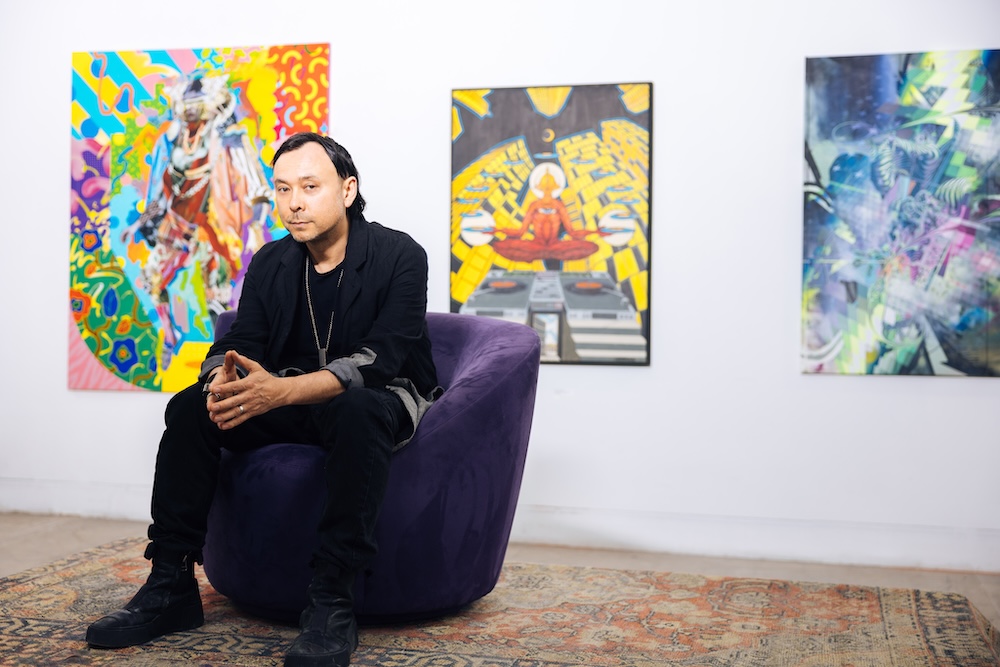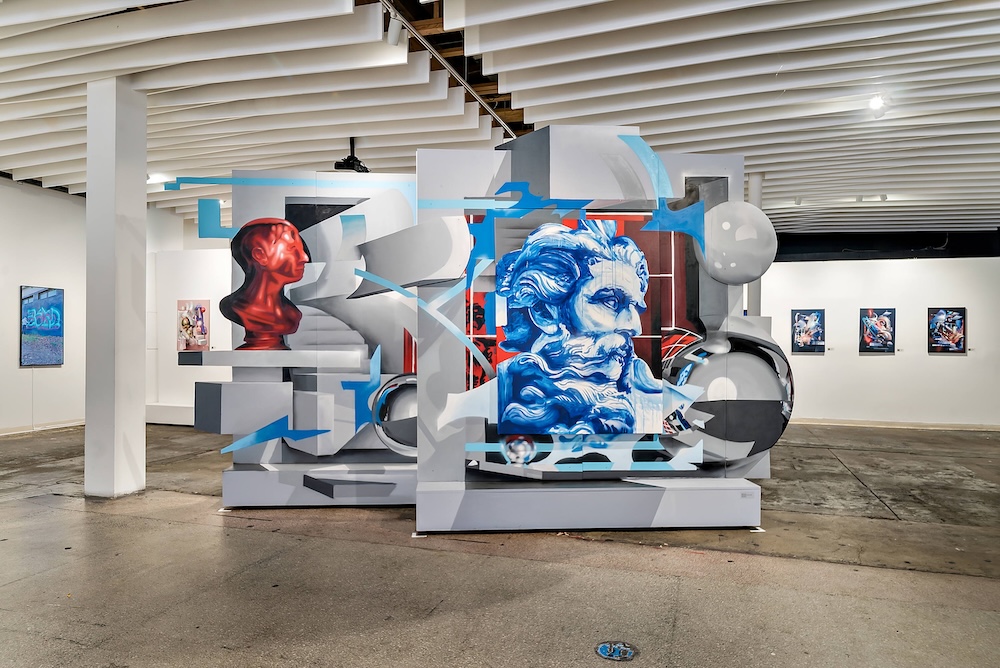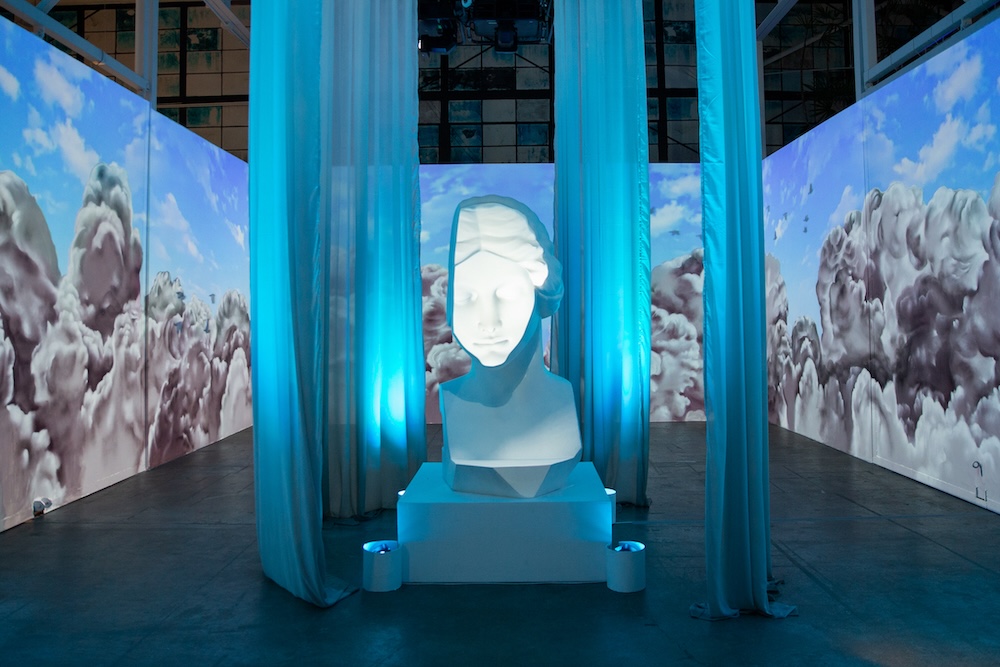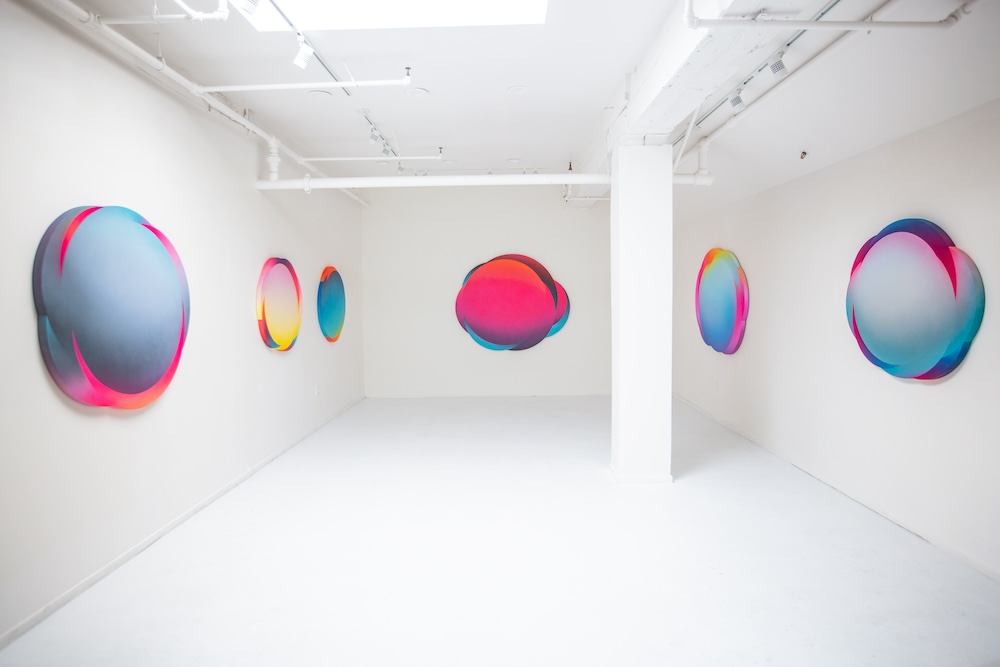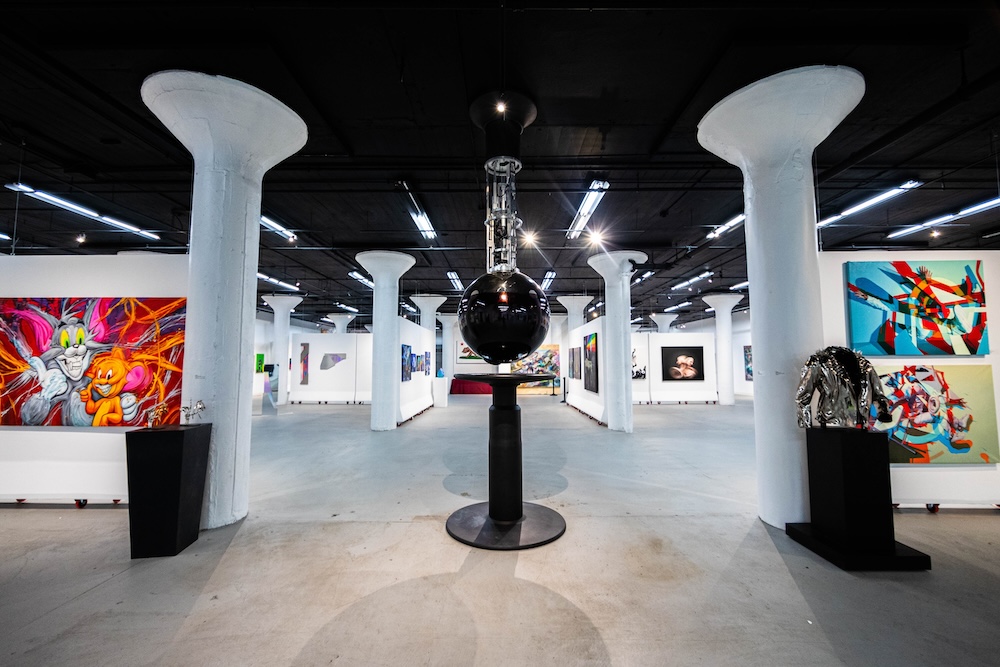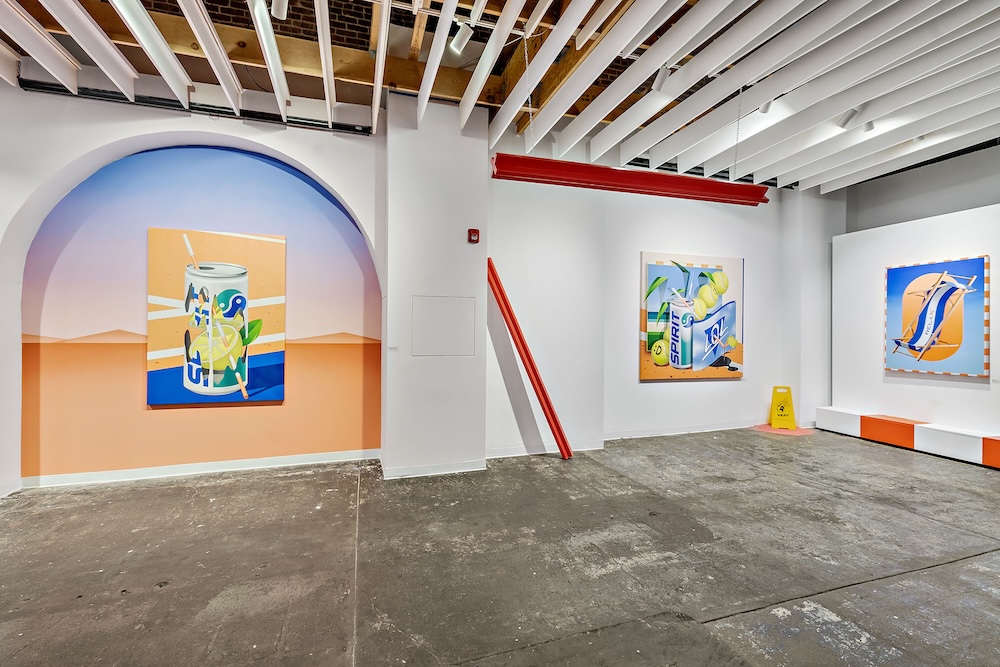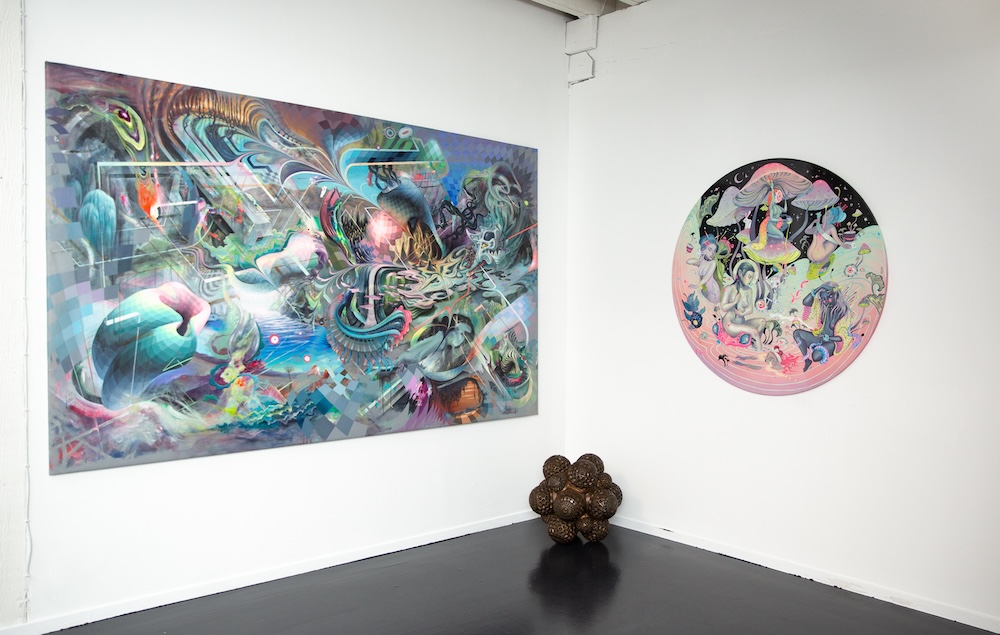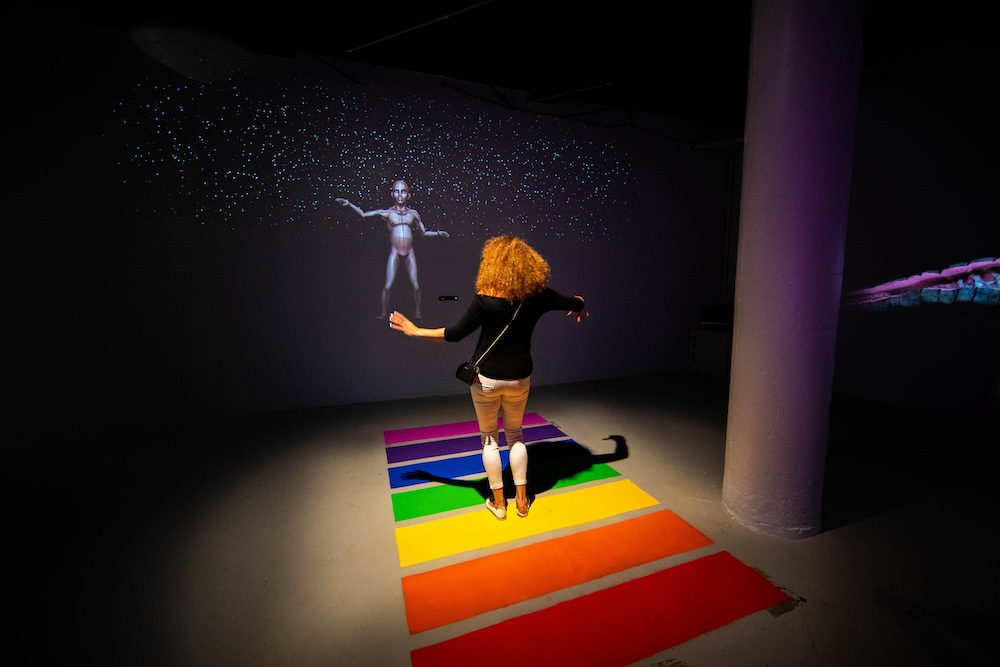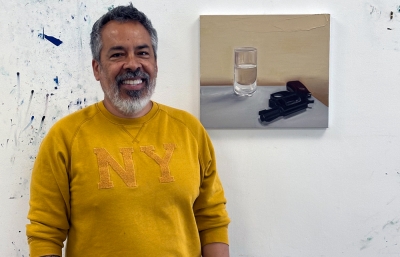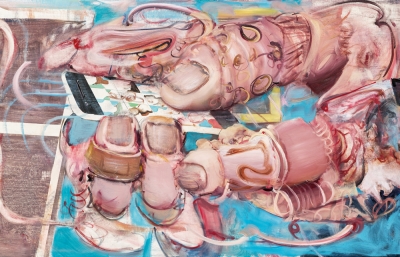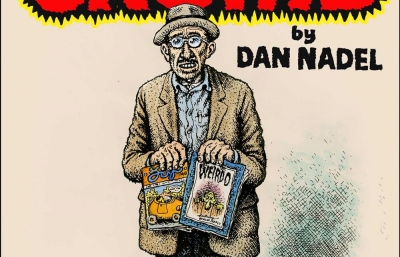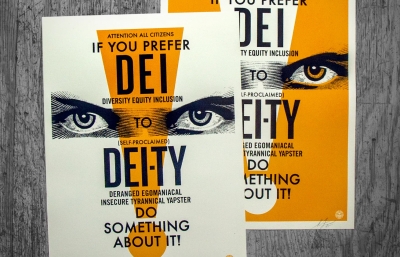There couldn’t be a better place to interview Paul Hemming than in the vortex of a Future Factory, right? The man behind Mirus Gallery has, for the last decade, taken the energy of his landmark San Francisco nightclub Temple and created gallery aesthetics that, in his words, “crystallize the unfathomable.” From SF to Denver, and now a new complex in downtown Los Angeles, Hemming is slamming all his chips on the table. We caught him on a rainy day in LA, in the midst of the build out, reflecting on his new endeavor and the years of channeling movement into everything he does.
Evan Pricco: It’s ten years of Mirus Gallery, and you're embedded in this gargantuan project. Let's just start here. What are you doing?
Paul Hemming: This is the Future Factory. It's five buildings on three sites in downtown LA where we're building this immersive, experiential entertainment complex of which Mirus Gallery is a part.
Well, then we should rewind and start from the beginning because this is clearly a massive build-up.
So I moved to San Francisco when I was 19 to go to study filmmaking at SF State. I also studied philosophy and Chinese, as well as DJ’d on the side. During my senior year the building where I lived in the Tenderloin caught fire and destroyed the movie I’d been working on. I ended up dropping out of school, started DJ'ing full-time, eventually opened a record store from money I got from the settlement of the fire, a place in Oakland on Broadway and Telegraph. It was called Zen City Records. We had a music studio in the basement, we hung artwork when the cool artists brought in some artwork and we threw parties. That was the seed that grew into everything I'm doing now, growing into the Temple Nightclub, which I eventually opened.
SF State, fire, record store, Temple?
Exactly. I started working on Temple in 2005. We opened in 2007, and during that time, I was collecting art. Once I opened the nightclub, I could afford to buy more art. And, little by little, I was, like, "You know what? I'm going to open my own gallery." So Mirus opened in 2012, and over the years now, I use the nightclub to experiment with different things, co-working, different incubators, just all kinds of experiments during this time. And then in 2017, we started our first phase of cell division and opened in Denver. We took the DNA of San Francisco and opened Mirus and Temple in Denver. Things were popping, getting ready to expand again into Seattle, then COVID hit and down it all toppled. I watched twenty years of entrepreneurial effort all come crashing down, having to lay off a couple hundred employees. I mean, the whole world was shutting down. It was pretty scary. It started out destructive, but ultimately turned into a creative process. I got some government funding and was able to reboot everything. The stimulus money came through and I was able to cure the problems, get out of debt, and orchestrate the next phase into LA, which is what we're building right now.
You had the record shop, which had an art component. You do Temple, you start collecting art. Let's talk about who the artists were or what was the thing that got you thinking or just even got you interested? There is a connection between the cultures that you were involved in and what the art world does, but what gave you the confidence to start collecting art? Because collecting art's a thing.
I started collecting stamps. I was seven years old, and I joined the stamp club, and I was taking old envelopes and soaking them in water, and then I'd go and collect them. And then, from stamps, it went to baseball cards, and then it went to comic books. I've always been drawn to certain types of artwork, like the X-Men. I didn't go to art school, per se. I never thought, "Hey, I'm going to open a gallery," or "I'm going to be an art historian" or anything like that, but it was meeting Damon Soule that changed everything. I met him when I was 19 or 20, and he was selling some of the paintings that he had on architectural paper. They were these robots that had fire hydrants on their heads. So that was the stART.
A nightclub, even if it contains art, functions so differently than a gallery. That must have been a leap?
Nightclubs can be so wasteful. A nightclub might be open two days a week, that's it, Fridays and Saturdays, for four hours. You make all your money and then it's dormant. And so I was always looking for ways to have a space be flexible and have multiple uses, both daytime, nighttime. So at one point I just said, "You know what? I'm going to open a gallery on the third floor." And in 2012, I made the leap and opened the gallery with all of those artists I was collecting, with Damon, with MARS-1 and Furtherrr Collective—and we’ve all become really great friends.
You're going to say the first show, but if you really had to think about the last decade, what show for Mirus made you think it might have over ten years of mileage, that you’re doing the right thing?
I think it was when we started with the Furtherrr Collective, where we presented all of the Furtherrr pieces that had been done. Damon had a section, Mars had a section, Oliver Vernon, too, so you could see what their work looked like individually. Then we did this other show called Escape Velocity, which was about the idea of the speed that you need to reach to be able to escape the gravitational force of the planet. That was really the idea for the vision of what Mirus was. And at that time, I was really inspired by Graffuturism. That website was blowing my mind. That was top. There were so many amazing artists I found there, like Felipe Pantone. Geometry of Chance was another one of abstract geometric art, where a lot of graffiti artists had transitioned. So those two shows set the tone of everything that Mirus became.
It makes sense that those are the two shows you mentioned because when I think of Mirus Gallery and I think about what you represent, there's something about propulsion. Movement forward seems to be the defining aesthetic, and Felipe Pantone is the perfect example, the first time I saw his work, as a matter of fact. Would you agree that movement is the aesthetic that guides your gallery?
Absolutely. I mean, Mirus means astonishing and strange, because I didn't want to call it the Paul Hemming Gallery. It wasn't about me, right? I'm behind that, behind the scenes, but I didn't need to be forward-facing with my name on the gallery. It wasn't about that. So I was searching for a name that I felt epitomized the style of work that I wanted to represent: amazing, astonishing, strange, absolutely futuristic, progressive, complex, just dynamic. It really represented the modern world that we lived in. Because I love artists who can crystallize the unfathomable.
When you look at these Furtherrr Collective works, it's like a freeze-frame of one explosive dynamic moment of creation, where you see everything. There's this idea of complexism that I've been toying with, that really is this new overarching concept of art that I've been championing over the years, which is tons of movement, tons of energy. It's like the moment of creation. You see science, quantum physics, geography, and weather patterns, and just so much is embedded so that you can really choose your own adventure. You look wherever your eye starts, you build that world with your own mind as your eye travels around the canvas and tries to make sense of it. So, I mean, a hundred percent.
LA seems, the way you're talking about it, like it's the perfect amalgamation of all the things that you've learned—and here we are!
Exactly. The Future Factory. And I love Andy Warhol's Factory, always inspired by Andy Warhol, what he did there. I mean, throwing parties, making movies, creating culture, making art, hosting eccentric visionaries. The Future Factory just came to me, but it actually was the name of a party that we threw and the name really just fit. And so we found a building, a complex. It's got five warehouses all joined together with three outdoor spaces. So there's going to be the music venue side, which is going to be immersive with four walls of video and a video ceiling, with translucent video tiles that can be converted into any environment. Then we will have the museum, gallery, marketplace, clothing, and records, including an outdoor space food court. It's basically a block party festival every Friday and Saturday.
Follow @mirusgallery for programming at their San Francisco, Denver and Los Angeles galleries.

